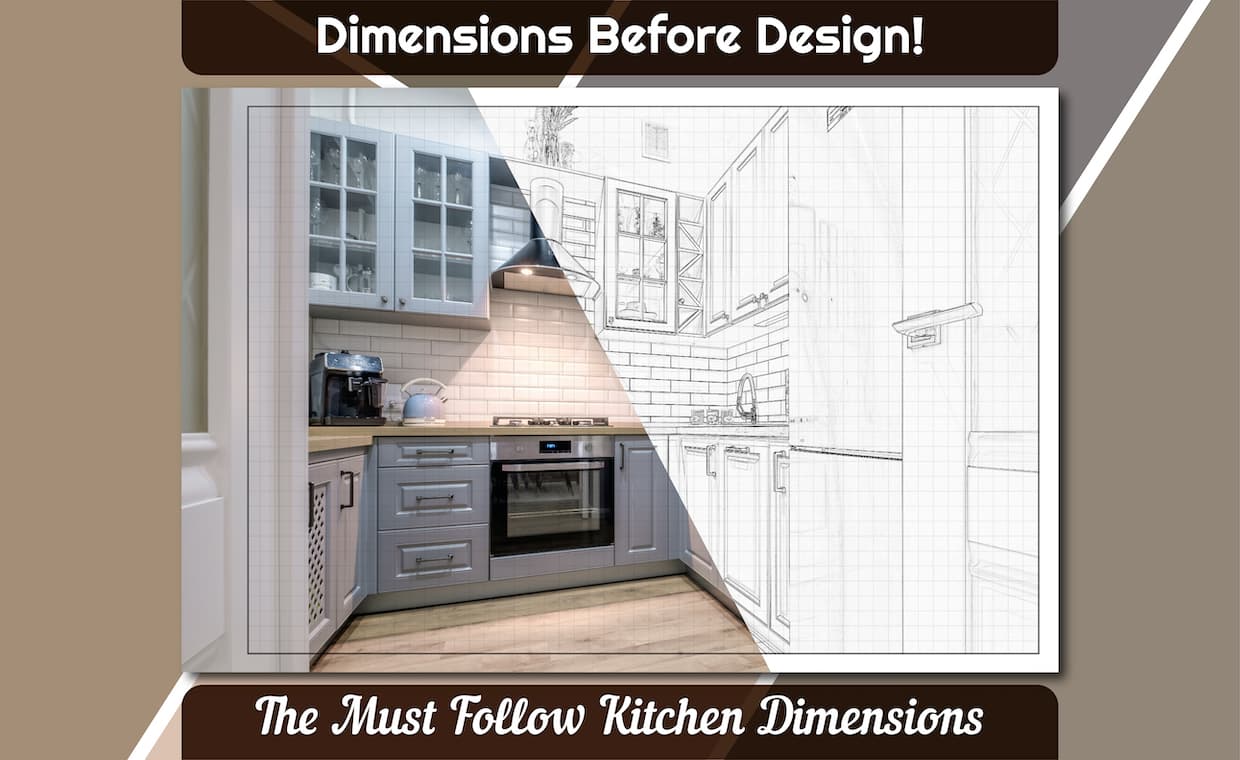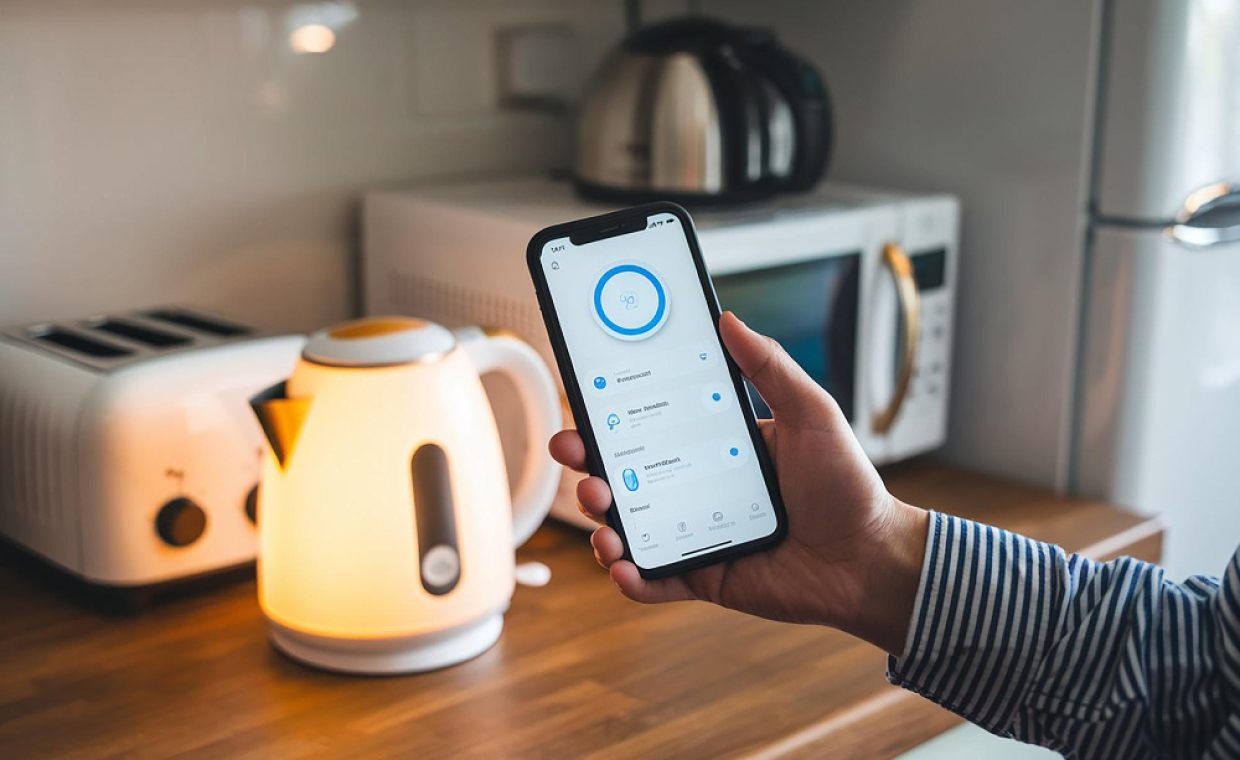
Despite the number of modern solutions, kitchen design guidelines are often ignored to save money or space. Some have the measurements wrong, while others let the services go unheeded. In the long run, a negligent approach pays out in the form of inadequate circulation space, dark corners, leaking pipes, and fire hazards accompanied by heavy service charges.
However, big or small a kitchen may be, it is the most integral space of the house, and therefore it is a must to follow kitchen design standards. It appears to be a straightforward arrangement of cabinets and sinks, but in practice, kitchen design is a lot more than its layout.

Ergonomics plays an important role in the success of a kitchen’s design. According to Gordon Inkeles (2010) (author of the book ‘Ergonomic Living: How to Create a User-Friendly Home & Officer), “since the kitchen is the main work center in your home, you simply cannot afford to ignore ergonomic principles here.” The heights, widths, and lengths determine the freedom of movement, safety, and efficiency of the space. A careless omission in simple kitchen design can cause great inconvenience to the users and can even be dangerous in some cases.
If you are designing a kitchen any time soon or remodelling it, make sure you follow these basic kitchen design rules before finalising your plans.
01. Basic Kitchen Design Rules
I. What should be the Height of your Kitchen?
The height of a kitchen from the finished floor to the ceiling should be at least 2.75m, except for the part that accommodates the floor trap on the upper floor.
II. What should be the Area of your Kitchen?
The area of your kitchen without dining should be at least 5.0 sq.m with a minimum width of 1.8m. The area is reduced to 4.5 sq.m, in the case of a separate store.
A kitchen that doubles as a dining area, should have a floor area greater than 7.5 sq.m where the minimum width must be 2.1m.
02. Kitchen Design Standards for Components and Utilities
I. Washing Area
Every kitchen must have means for washing utensils, which should lead to a grated and trapped connection either directly or through a sink to the waste pipe.

II. Openings
The kitchen shall have a window or a ventilator for the purpose of daylighting and cross-ventilation. In general, according to NBC, the minimum area of an opening, inclusive of frames, is at least:
- one-tenth of the floor area for a hot-dry climate;
- one-sixth of the floor area for a warm-humid climate;
- one-eighth of the floor area for temperate and composite climates; and
- one-twelfth of the floor area for a cold climate.
Increase these areas by 25 percent for a kitchen.
Consider only the openable area in the case of a partly fixed window.
Any part of the room that is more than 7.5 m away from the opening is not lit by that opening.
III. Gas Supply
Gas pipes should run in separate shafts that are specifically on external walls and away from the staircases. Gas distribution pipes should be located below the false ceiling. Keep the length of these pipes as short as possible.
In the case of the modern kitchen design the hood of cooking area should have grease filters with a metallic grill to catch the oil vapours escaping into the fume hood.
IV. Electrical and Allied Installations
Basic kitchen design rules say that it is not advisable to place switchboards above gas stoves, sinks, or within 2.5 m of any washing unit in the kitchen. It is better to have an additional circuit for the kitchen. The sub-circuit should have a maximum of ten points of light, fans, and 6A socket outlets. The load of this circuit should not be more than 800 W and wiring with 1.5 mm2 copper conductor cable is suitable.

As per kitchen design standards, sockets in kitchens should not be within a height of 1 m from the ground. Considering the number of gadgets that are used in modern kitchens, it is only appropriate to provide many combinations of 6 A/16 A sockets.
Seeing that most kitchen appliances come with flexible cords of 1.5 or 2m, any portion of the kitchen counter should be within a convenient distance of 1 m from a socket outlet. The location of sockets depends on the layout of the equipment. The outlets should be placed 150 mm above the finished kitchen counter.
V. Exhausts and Ducting
Fix the exhaust fans to an external wall or to a duct of non-combustible material that leads directly outside. As mentioned in the book–Black & Decker Codes for Homeowners (2010) written by Bruce A. Barker, discharge kitchen exhaust ducts to the outdoors when natural or mechanical ventilation is not provided in the kitchen area. Never pass the ducts through areas with combustible materials. However, in the case of centralised ducting, it is wise to protect it to confine the spread of fire.

VI. Other Requirements
If deemed necessary, a kitchen must have an impermeable floor and a flue.
03. Anthropometrics and Requirements for Elderly and Persons with Disabilities
Kitchens must be for everyone; enabling even people in wheelchairs to move around the space freely.

The basic requirements, according to kitchen design standards, to make your kitchen wheelchair-friendly are as follows:
- Maintain a minimum turning radius of 1500 mm between the counter and the opposite walls.

- The floor surface must be slip-resistant, allowing easy wheelchair mobility.
- Kitchen appliances should be within the reach of both types of users, whether standing or sitting in a wheelchair. Provide a worktop beside all appliances.
- The sink taps should be accessible and operable with one hand. Ensure that the underside of a sink that has knee space for wheelchair users is insulated.
- The height of countertops shall be between 750 mm and 800 mm with the provision of clear knee space. The minimum dimensions of the knee space as per guidelines are 900 mm wide, 480 mm deep, and 680 to 700 mm high.
- For safety, countertops and slabs should have rounded edges. Polish all surfaces to ease the movement of objects over them.
- Slide-out working spaces are desirable for functioning as an over-the-lap working surface. The main work area must have stools for people with walking disabilities.
- The shelves should be within reach of a wheelchair user. Keeping the forward and side reach of wheelchair users in mind, the height is between 300 mm and 1100 mm from the floor surface.


04. Kitchen Design Standards for Low-Income Housing
1. In Urban and Rural Areas
- Cooking space: The size of a cooking alcove shall be at least 2.4 m² with 1.2 m as the minimum width.
- Area: The size of the kitchen in a two-room house shall be at least 3.3 m² with a minimum width of 1.5 m.
2. In Rural Areas
- Depending on the climatic conditions, cooking areas can be semi-open spaces with low walls and roofs. Even an open kitchen design is a good option here.
- Smokeless chulhas are desirable, keeping health and fuel efficiency in mind.
05. Sound insulation and noise control
Kitchens can be quite noisy, and it becomes important to consider noise control in the initial stages of design itself.
- In the case of semi-detached houses, the hall, kitchen, and staircase can adjoin each other on either side of the party wall. This provides a sound baffle between rooms that need to be away from the noise.
- Kitchens should not be over living rooms and bedrooms, whether that is within the same dwelling or over other dwellings.
Conclusion
If you expect good performance from your kitchen, you cannot have that without following basic kitchen design rules that make the space functional. These kitchen design standards were finalised after extensive research and practical studies. However, they are effective only when applied practically.
With a host of appliances and kitchen layout possibilities, our job is easier, and just a few minutes of mindful reading will make your design a fruitful effort.
Also check out the below article for your dream kitchen.
7 Steps Towards Planning and Designing Your Dream Kitchen.
Author Bio
Brickly – Sakshi – Sakshi navigates the corporate world by day, and transforms into a wordsmith by night, bridging the gap between spaces and stories. Occasional travel and regular reading are her muse. Her LinkedIn following, a vibrant community of around 12k kindred spirits, emboldens her to continue this enriching exchange of ideas.






























